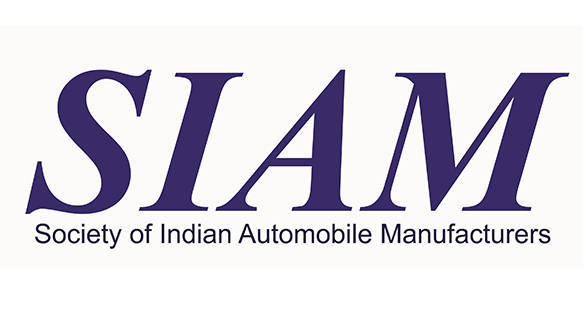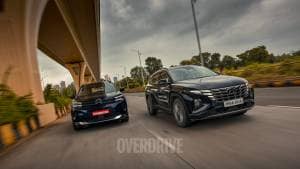Diesel vehicle registration ban in Delhi not "holistic", says SIAM
The Society of Indian Automobile Manufacturers has issued a detailed statement challenging the Supreme Court's temporary restriction on sale of diesel SUVs and cars with engine capacities above 2000cc in Delhi. In the statement, SIAM has said that though the pollution issue in Delhi is very real, the Supreme Court's decision is not "holistic" and has been taken without considering its longterm impacts.

According to reports cited by SIAM, "vehicles are responsible for only 20 per cent of pollution in Delhi out of which 14-15 per cent is attributed to passenger cars, which makes the overall load of passenger cars on the city's pollution levels a miniscule 3 per cent." These reports that were submitted to the SC have been ignored completely while making this decision, says SIAM.
The organisation further pointed out that restricting sales of BS IV vehicles in the city will delay the proportion of BS IV-compliant vehicles on the city roads which run much more cleanly than vehicles compliant with BS I/II/III... If reducing pollution was the court's aim, then it should have promoted use of BS IV vehicles and restricted use of older vehicles as the emissions from one old vehicle are equivalent to that from five new ones.
SIAM also stated that back in the year 2003, an Auto Fuel Policy was drawn containing several measures to control pollution in Delhi out of which only a handful were implemented. The approach of the court towards the issue has been deemed as "single minded" and is claimed to be targetting only the auto industry which is a soft target when it comes to the issue of Delhi's pollution problem.
The organisation further added that "historically, pollution levels in Delhi always start rising from September to December and start falling from January till August", irrespective of the number of vehicles sold in the city. Therefore banning sale of a particular segment of vehicles during this period will not make much difference to the existing pollution levels in the city.
SIAM even suggested some measures to prevent the pollution crisis effectively:
1) Complete the construction of bypasses in Delhi, which has been delayed for several years, so that the truck traffic not destined for Delhi could be effectively diverted.
2) Have accountability to ensure that burning of biomass and paddy fields is immediately stopped in and around NCR.
3) "Employ dust collectors and vacuum cleaners to clean the dust on the road kerb-sides."
4) Urgently lay down a policy for removal and scrappage of old and highly polluting vehicles off the road.
5) Constitute an Expert Committee consisting of all stakeholders to draw up an holistic action plan for short, medium and long term with quantifiable targets based upon data to ensure sustained air quality improvements.
The Delhi Government is also coming down hard on commercial vehicles that use Delhi as a transit route to other states by doubling the Green Cess. As of now, the ban on registration of diesel vehicles with engine capacities exceeding 2000cc will be implemented from January 1, 2016 to March 31, 2016 in Delhi. Many manufacturers, primarily Mahindra and Mahindra, have urged the SC to reconsider these policies at the end of the trial period.
Also read:
Is there any rationale behind the Delhi diesel car registration ban?
Delhi has a pollution problem but the solutions do not make any sense
SIAM Press Release: Auto Industry Pay the Price for Lack of Holistic Plan
| Mumbai, 16th December 2016: The Automobile Industry appreciates the concern of the Hon'ble Supreme Court on the high levels of air pollution, specially particulate matter emissions in Delhi. The pollution issue in Delhi needs to be looked at holistically if the objective of improving the air quality is to be achieved, said SIAM. In light of this, the Hon'ble Supreme Court Order banning private diesel passenger vehicles and SUVs of 2000 cc engine capacity and above, is most unfortunate. While this would certainly hurt some segments of the automotive industry, it will not bring about any perceptible improvement in the air quality of Delhi. However, Auto Industry welcomes the Hon'ble Courts direction for controlling pollution from other sources which has been neglected for last couple of decades. This order has been passed after totally ignoring the findings of the most summary of the recent study on source apportionment for NCT of Delhi shared with the Hon'ble Court, which mentions that the vehicles are responsible for only 20 % of the pollution in Delhi, out of which only 14-15% is attributable to passenger cars. This makes the overall pollution load of passenger cars a miniscule number of just 3%. Restricting sales of BS IV compliant vehicles will further delay the proportion of BS IV vehicles on the road, while older BS 1/2/3 vehicles would continue to ply. If reduction of pollution was the objective, the Hon'ble Court could have encouraged more BS IV vehicles to be sold and could have restricted use of older vehicles that pollute more, as one old vehicle emits emissions equivalent to five new vehicles. Hence, old vehicles entering from outside should also pay environmental compensation tax. Bringing in better technology to replace older technologies would have been more effective in meeting the challenge of pollution and air quality. The Auto Industry is also concerned on the unavailability of a Comprehensive Action Plan for addressing the issue of Air Pollution in Delhi, this was stated by SIAM after the order was passed by the Hon'ble Supreme Court today. Way back in the year 2003, the Auto Fuel Policy had recommended several measures to address the issue of air pollution. Out of these, only handfuls of recommendations concerning the auto industry were implemented while no action was taken on the other causes of pollution. Single minded approach to address only the auto industry which is a soft target has resulted in high pollution continuing in Delhi, despite of auto industry moving rapidly to BS IV norms within a short period of 10 years a feat not performed by any other country till date. It is distressing to note that lessons from the past have not been learnt. Historical data shows that the pollution levels in Delhi always rise from September to December and always starts falling from January till August onwards, whether the number of vehicles increases or not. Therefore, taking any decision to ban a certain segment of vehicles based on rising pollution from September to December would not yield the desired result. SIAM would suggest the following measures if pollution has to be effectively addressed:- a) Complete the construction of bypasses in Delhi, which has been delayed for several years, so that the truck traffic not destined for Delhi could be effectively diverted. b) Have accountability to ensure that burning of biomass and paddy fields is immediately stopped in and around NCR. c) Employ dust collectors and vaccum cleaners to clean the dust on the road kerb-sides d) Urgently lay down a policy for remove and scrappage of old and highly polluting vehicles off the road. e) Constitute an Expert Committee consisting of all stakeholders to draw up an holistic action plan for short, medium and long term with quantifiable targets based upon data to ensure sustained air quality improvements. | |














